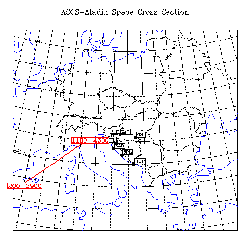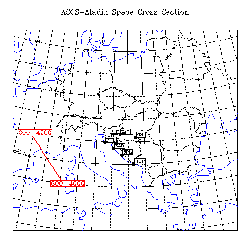Vertical Cross Sections
In this case study the important part of study is concentrated on the strong wind, Mistral, which appeared at the south coast of France and in the Mediterranean. Till now the process of cyclogenesis in the Mediterranean is diagnosed by help of satellite images and numerical parameter fields on certain pressure levels. In this chapter the vertical cross section of the ALADIN LACE model wind field will help to understand vertical structure of the cyclone and the origin of the Mistral.
Vertical Cross Sections (VCS)
In this chapter two VCS are shown, one parallel with the south coast of France (perpendicular to the Mistral) and the second one perpendicular to the coast (parallel with the Mistral). Model VCS of the wind up to 5 km are shown here.

|
Cross Section 1 |

|
Cross Section 2 |
Summary
Use of the vertical cross sections enables the insight into the vertical structure of the atmosphere during the process of cyclogenesis,
especially at the wind field and origin of the Mistral. The horizontal distribution of the wind field in lower and upper level shows the
existence of the strong wind over Western Mediterranean. The origin and the flow of the wind is even more clear and better understood from
the vertical cross section.
The mechanism of beginning of Mistral can be followed by vertical cross section parallel and perpendicularly on the south coast of
France. The low level jet and the "tunneled effect" of the Mistral can nicely be seen in the VCS parallel with the coast. In the VCS prependicularly
on the coast of France the flow over land and over sea can be followed. During the whole time the maximum of the north-west wind just over
the sea (near the coast) can be followed.